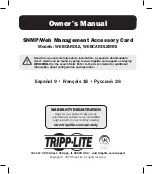
43
Configuring AAA authentication methods for an ISP domain
In AAA, authentication, authorization, and accounting are separate processes. Authentication refers to
the interactive authentication process of username/password/user information during an access or
service request. The authentication process does not send authorization information to a supplicant or
trigger accounting.
AAA supports the following authentication methods:
•
No authentication
(
none
)—All users are trusted and no authentication is performed. Generally, do
not use this method.
•
Local authentication
(
local
)—Authentication is performed by the NAS, which is configured with the
user information, including the usernames, passwords, and attributes. Local authentication allows
high speed and low cost, but the amount of information that can be stored is limited by the size of
the storage space.
•
Remote authentication
(
scheme
)—The NAS cooperates with a RADIUS, or HWTACACS server to
authenticate users. Remote authentication provides centralized information management, high
capacity, high reliability, and support for centralized authentication service for multiple NASs. You
can configure local or no authentication as the backup method, which is used when the remote
server is not available. No authentication can only be configured for LAN users as the backup
method of remote authentication.
You can configure AAA authentication to work alone without authorization and accounting. By default,
an ISP domain uses the local authentication method.
Before configuring authentication methods, complete the following tasks:
1.
For RADIUS or HWTACACS authentication, configure the RADIUS or HWTACACS scheme to be
referenced first. The local and none authentication methods do not require a scheme.
2.
Determine the access type or service type to be configured. With AAA, you can configure an
authentication method for each access type and service type, limiting the authentication protocols
that can be used for access.
3.
Determine whether to configure an authentication method for all access types or service types.
Follow these guidelines when you configure AAA authentication methods for an ISP domain:
•
The authentication method specified with the
authentication default
command is for all types of
users and has a priority lower than that for a specific access type.
•
With an authentication method that references a RADIUS scheme, AAA accepts only the
authentication result from the RADIUS server. The Access-Accept message from the RADIUS server
also carries the authorization information, but the authentication process ignores the information.
•
If you specify the
radius-scheme
radius-scheme-name
local
,
hwtacacs-scheme
hwtacacs-scheme-name
local
option when you configure an authentication method, local
authentication is the backup method and is used only when the remote server is not available.
•
If you specify only the
local
or
none
keyword in an authentication method configuration command,
the switch has no backup authentication method and performs only local authentication or does not
perform any authentication.
•
If the method for level switching authentication references an HWTACACS scheme, the switch uses
the login username of a user for level switching authentication of the user by default. If the method
for level switching authentication references a RADIUS scheme, the system uses the username
configured for the corresponding privilege level on the RADIUS server for level switching
authentication, rather than the login username. A username configured on the RADIUS server is in
the format of
$enab
level
$
, where
level
specifies the privilege level to which the user wants to switch.
















































